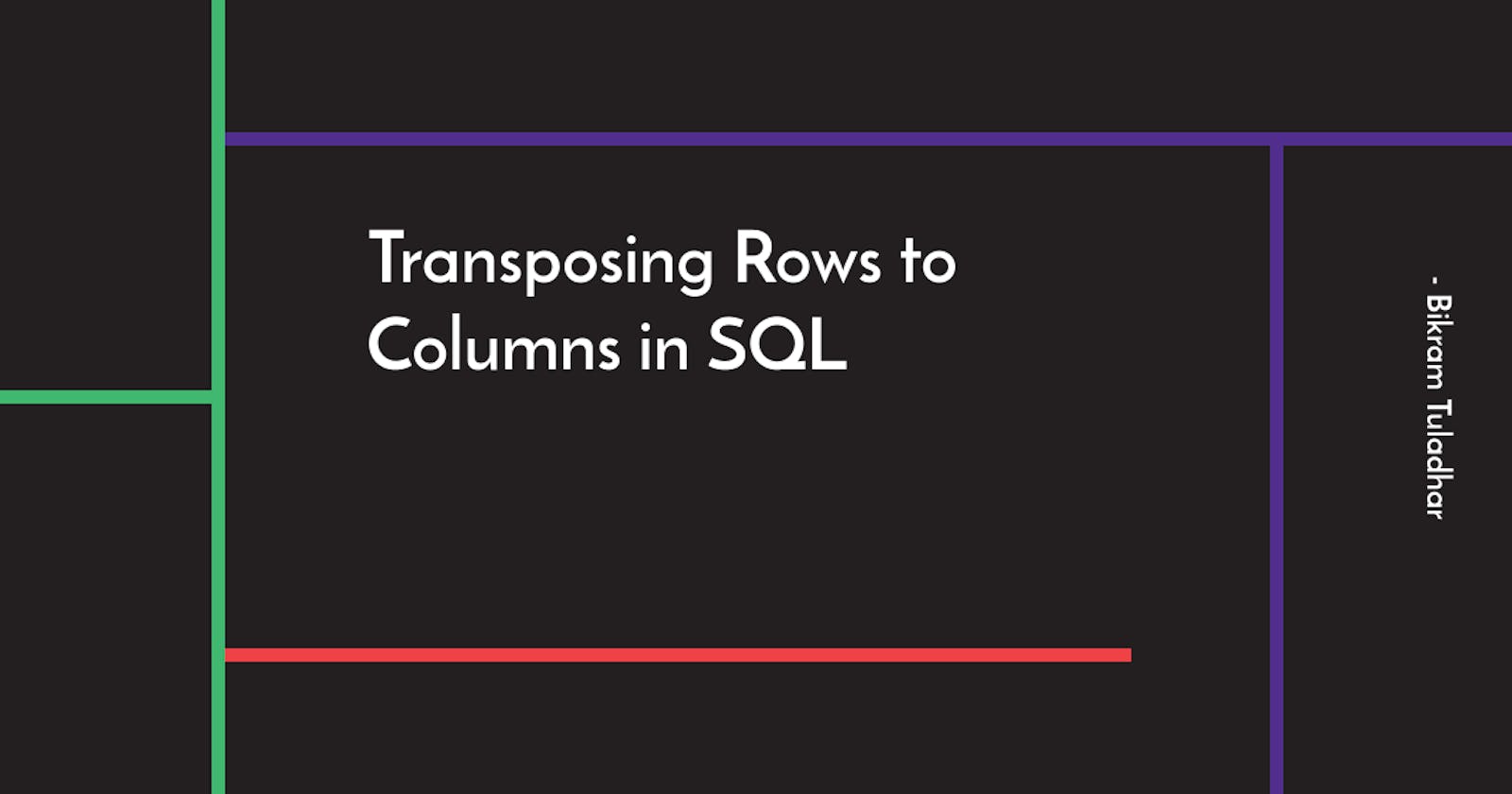Sometimes, you may want to pivot data in a SQL table so that rows become columns and vice versa. This can be useful for creating reports or visualizations that compare data across different categories.
One way to do this in SQL is by using a database view, GROUP BY clause, and HAVING clause. Let's take a look at an example of how this can be done.
SELECT * FROM post_meta;
+---------+-------------+------------+
| post_id | meta_key | meta_value |
+---------+-------------+------------+
| 1 | first_name | bikram |
| 1 | last_name | tuladhar |
| 1 | status | draft |
| 1 | created_at | 2023-02-01 |
+---------+-------------+------------+
Consider the following SQL statement:
CREATE OR REPLACE VIEW post_meta_simplified AS
SELECT post_id,
MAX(IF(meta_key = 'first_name', meta_value, NULL)) AS first_name,
MAX(IF(meta_key = 'last_name', meta_value, NULL)) AS last_name,
MAX(IF(meta_key = 'status', meta_value, NULL)) AS status,
MAX(IF(meta_key = 'created_at', meta_value, NULL)) AS created_at
FROM post_meta
GROUP BY post_id
HAVING CAST(created_at AS DATE) > CAST('2023-01-01' AS DATE)
AND status = 'draft';
This SQL statement creates a view called post_meta_simplified which displays various pieces of metadata (stored in the post_meta table) for posts that meet certain criteria. The criteria are:
The date created is after January 1st, 2023
The status is "draft"
The view is created using a SELECT statement with a GROUP BY clause and a series of MAX() functions with IF() statements inside. The IF() statements check the value of the meta_key column and return the corresponding value in the meta_value column if it matches the given key. If there is no match, it returns NULL. The MAX() function is used to return the meta_value for the row with the matching meta_key (there may be multiple rows for each post_id with different meta_key/meta_value pairs).
The view also includes a HAVING clause which filters the view to only include rows where the date_created is after January 1st, 2023 and the Status is "draft".
For example, the following SELECT statement transposes the first_name, last_name, created_at and status columns:
SELECT *
FROM post_meta_simplified WHERE post_id = 1;
+---------+------------+-----------+---------+------------+
| post_id | first_name | last_name | status | created_at |
+---------+------------+-----------+---------+------------+
| 1 | bikram | tuladhar | draft | 2023-02-01 |
+---------+------------+-----------+---------+------------+
This will return a table with one row for each post_id in the post_meta_simplified view, with the first_name, last_name, created_at and status values transposed as columns.
Using a database view, GROUP BY clause, and HAVING clause can be a powerful way to transpose rows to columns in SQL and filter the resulting data based on specific criteria. It can be particularly useful when working with large and complex datasets where you need to extract specific pieces of information and present them in a more easily digestible format.
